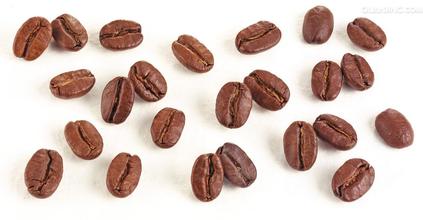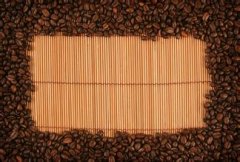A brief history of the development of Panamanian coffee: Panamanian coffee export, boutique coffee, coffee plantation species

A brief history of coffee development in Panama:
Panama's geographical advantage lies in the fact that it has many distinctive microclimates suitable for coffee cultivation, and Panama also has many dedicated and professional coffee growers. This means that Panama has a lot of very good coffee, but this coffee is often associated with high prices.
Coffee was first brought to Panama by European settlers in the 19th century. In the past, Panamanian coffee was not very popular and its production was only 1/10 of that of its neighbor Costa Rica, but now the coffee industry's attention to fine coffee has made Panama increasingly interested in growing coffee.
The high coffee prices in Panama are mainly caused by the following factors:
Land Price: For the people of North America, they are very eager to buy a stable and beautiful land at a cheap price. Panama is one such place;
Panama's more farmers export coffee under the name of estates to emphasize their own estates;
Panama's labor laws impose high labor requirements, so the coffee industry has to pay higher wages, which consumers have to pay.
Esmeralda Estate
When discussing coffee prices, we should pay great attention to one plantation in Panama, and even say that no other single plantation has so far had such an impact on coffee cultivation in Central America. This is Esmeralda Estate, owned and operated by the Peterson family.
When commodity prices were relatively low, the panama boutique coffee association organized a contest called "best panama": beans from different parts of panama were ranked and auctioned online. Esmeralda Estate has been growing a coffee called Geisha for many years, and this auction makes their coffee known to more people. From 2004 to 2007, they won the competition for four consecutive years, then won it again in 2009, 2010 and 2013. It continued to break records until it was priced at $21/lb in 2004, then rose to $170/lb in 2010. In 2013, a small portion of that sun-treated coffee was sold for $350.25/lb. No one questioned that this was the highest price ever paid for a single estate coffee.
Unlike some other high-priced coffees (such as cat poop and blue mountain), the quality of this estate's coffee is truly at its price level, although high demand and market factors also play a role. This record-breaking coffee tastes unusual: bright and strong floral and citrus flavours make it tea. These are all derived from the advantages of the "Geisha" variety.
This estate allowed Geisha to be grown on coffee plantations not only in Panama but throughout Central America. For many coffee farmers, this variety means high prices, and to a large extent, this perception is correct. Because as a plantation of "Geisha", its coffee price can always sell more expensive than other plantations.
traceability
Panamanian coffee is highly traceable. Most Panamanian coffees can be traced back to a single estate or even part of a farm.
flavor profile
Panama's better coffee has citrus, floral, bright taste, elegant and complex flavor.
Population: 3406000
Annual output in 2013:6000 tons
The panamanian regionalization depends mainly on the marketing situation of coffee and not too much on geographical distribution. Before, coffee spread widely, the following areas are actually a region, but these areas are closely connected together.
Boquete
This is what we know best about Panama. The special mountainous terrain of this area forms a very suitable microclimate for coffee cultivation. Cooler weather and frequent foggy days slow coffee cherry ripening, and some even say the climate can simulate high-altitude cultivation.
Altitude: 400-1900m
Harvest period: December to March
Cultivated varieties: Tibika, Kadura, Kaduai, Bourbon, Guixia, San Ramon
Candela
This area produces a lot of food for Panama, and also grows excellent coffee. This area borders Costa Rica.
Altitude: 1200-1600m
Harvest period: December to March
Cultivated varieties: Tibika, Kadura, Kaduai, Bourbon, Guixia, San Ramon
Renacimiento
Another appellation in Chirqui province, bordering Costa Rica. This region is relatively small, so it is not a major producer of Panamanian fine coffee.
Altitude: 1100-1500 m
Harvest period: December to March
Cultivated varieties: Tibika, Kadura, Kaduai, Bourbon, Guixia, San Ramon
Article from Douban. com
Important Notice :
前街咖啡 FrontStreet Coffee has moved to new addredd:
FrontStreet Coffee Address: 315,Donghua East Road,GuangZhou
Tel:020 38364473
- Prev

Introduction of Panamanian national coffee beans in America-with unique "fresh and delicious" flavor characteristics
Boutique Bean Manor Story-Alida's Story about Arida Manor more than half of the area is in the reservation of Panama National Park. She is an ultra-high-altitude estate rarely seen in Central America, depending on the feasibility of the topography. Grow coffee from 1700 meters to nearly 2, 000 meters and is famous for its rich, delicious spindle flavor. Erida Manor belongs to its owner, Wiframer.
- Next

Practical information: what is the difference between Panamanian Rosa coffee beans and Guatemalan Rosa coffee beans?
Species of Geisha were discovered in the Rose Summer Forest of Ethiopia in 1931 and sent to the Coffee Research Institute in Kenya, introduced to Uganda and Tanzania in 1936, introduced to Costa Rica in 1953, and Panama was introduced in the 1970s by Mr. Francico Serraxin of the Tonba Seven Farm Garden from CATIE in Costa Rica and began to grow Rose Summer Coffee.
Related
- Does Rose Summer choose Blue, Green or Red? Detailed explanation of Rose Summer Coffee plots and Classification in Panamanian Jade Manor
- What is the difference between the origin, producing area, processing plant, cooperative and manor of coffee beans?
- How fine does the espresso powder fit? how to grind the espresso?
- Sca coffee roasting degree color card coffee roasting degree 8 roasting color values what do you mean?
- The practice of lattes: how to make lattes at home
- Introduction to Indonesian Fine Coffee beans-- Java Coffee producing area of Indonesian Arabica Coffee
- How much will the flavor of light and medium roasted rose summer be expressed? What baking level is rose summer suitable for?
- Introduction to the characteristics of washing, sun-drying or wet-planing coffee commonly used in Mantenin, Indonesia
- Price characteristics of Arabica Coffee Bean Starbucks introduction to Manning Coffee Bean Taste producing area Variety Manor
- What is the authentic Yega flavor? What are the flavor characteristics of the really excellent Yejasuffi coffee beans?

